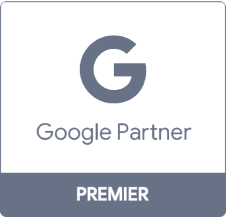6 Ways to Remarket with Google Ads
If you’ve never used remarketing services, Google Ads is the best place to start. It’s also one of the most popular online advertising platforms today, so if you use it to run PPC campaigns, expanding into remarketing is a logical next step.
But how do you use remarketing to your advantage?
There are several ways to create a strategy, meaning that you’re almost guaranteed to find a remarketing style that fits your company’s specific needs.
WebFX’s team of more than 500+ experts will help guide you in the right direction when selecting the strategy best for your company. You can call 888-601-5359 or contact us online for help getting started today!
On this page, we’ll take a look at six ways you can use Google Ads to remarket your company online.
What is remarketing?
We made a video covering the basics of Google Ads remarketing to make things easier.
Remarketing is the practice of showing ads to people who have already visited your site.
You can create the ads, choose who sees them, and determine when they see them based on the parameters that Google Ads gives you.
These parameters are so versatile that you can create multiple campaigns that all target highly-specific niches. So for every person who’s read about a product or service on your site, you can tailor a campaign based on what they read.
You can also use remarketing to appeal to a more general audience, like people who have been to your homepage. This is a much less specific group — and they probably won’t convert into customers based on this one interaction — but it’s great for building brand awareness.
That awareness can make all the difference between someone choosing you or one of your competitors.
It also makes Ads remarketing an excellent companion to other digital strategies, like search engine optimization (SEO).
By using remarketing in conjunction with other strategies, you can achieve new levels of growth without going over your marketing budget.
Six remarketing options
To start, we’ll look at standard remarketing on Google Ads.
1. Standard remarketing

Works best for: Keeping your business top of mind
Standard remarketing lets you show ads for your business to people who’ve previously visited your website.
That activity is tracked via cookies in users’ browsers, which Google then uses to identify someone who’s been to your site before.
Then, when a user who’s previously visited your site goes to a website in Google’s display network, they’ll see the ads you’ve created to remarket your business throughout Google’s ad affiliates.
Since this is a paid promotional method, you’ll have to spend to earn traction with remarketing.
But it’s worth the investment when you’re moving potential customers or leads through your sales funnel.
The idea is that targeted individuals will see your ads, remember your business, and click back to the corresponding page on your site.
That gives you the chance to convert that user into a paying customer, just like with pay-per-click (PPC) advertising.
The concepts behind standard remarketing form the foundation of the remaining five remarketing options from Google Ads.
So once you’re comfortable with standard remarketing, you can start looking at other options to get a better idea of what would work best for your business.
2. Dynamic remarketing

Works best for: Promoting specific products and / or services
Dynamic remarketing scales your products and services to your target recipients, so someone doesn’t see the same ad over and over.
Instead, your target audience will see ads that appeal to what attracted them to a product or service in the first place.
So if you owned a landscaping company, someone might come to your site and read your page on lawn mowing services. But then they don’t convert.
Dynamic remarketing on Google takes that information and interprets what else they’d like to see based on your parameters.
They’d probably start by seeing an ad about your lawn care services. But then the next ad they see might be about garden care, then weed prevention, and so on.
While all of these topics aren’t 100% related to one another, they’re all based on the idea that if someone is interested in one, they’re likely to be interested in the others.
That means you’re using your advertising budget on users who are qualified to become a client, but weren’t ready to convert on their first visit.
Dynamic remarketing covers those bases, so your potential customers have multiple opportunities to come back to your site and turn into paying clients.
3. Mobile app remarketing

Works best for: Companies emphasizing mobile usage on their apps or websites
Mobile app remarketing uses the same principles as standard remarketing, but it applies them to mobile apps.
This approach targets users based on two main criteria:
- If they’ve visited your mobile site
- If they’ve used your mobile app
When someone qualifies for either criteria, you can reach them with ads for your business in other apps and mobile websites.
This happens because Google places a heavy emphasis on mobile usability. In fact, responsive design is now a major ranking factor in Google search results.
So it makes sense that Google has a mobile-specific ad platform, given that an increasing number of users access the Internet on mobile devices every year.
If your business is exclusively on apps (or you want to break into that market), this is an excellent choice since it focuses on mobile users.
4. Search ad remarketing

Works best for: Promoting your business to potential customers as they search for related keywords
Search ad remarketing is a PPC strategy that specifically targets people who have visited your site before.
With search ad remarketing, you can place ads on keywords that only show up when Google sees that someone has visited your site before.
So let’s go back to our lawn care company. The keyword “how to care for a lawn” is purely informational, so the searcher probably isn’t ready to convert into a new client yet.
But if someone’s visited your site already, then they’re already familiar with your brand.
So the next time they search “how to care for a lawn,” you can add a PPC ad to your organic SEO results and show up twice in search results.
That lets you double-down on a searcher who you know has already heard of you and has an interest in your services.
You can also use search ad remarketing to bid more on certain keywords you already target.
So if you regularly targeted “how to care for a lawn” with PPC, you could increase your ad spend by 25% to show your ads above your competitors for remarketing.
It’ll take some testing on your part to figure out which method works best. But once you have it nailed down, search ad remarketing can do wonders for client conversion.
5. Video remarketing

Works best for: Companies with popular YouTube channels
Video remarketing is based on videos you’ve posted to YouTube.
When you use video remarketing, you create lists of YouTube users who you know are interested in your business.
Then, you add that list to a certain video on your channel, and promote that video to your list of previous viewers.
Your videos can also show up in search or display networks. So whether someone’s searching on Google, visiting one of their ad partners, or watching videos on YouTube, they could see your ad.
That makes video remarketing one of the most versatile forms of advertising today.
You can start using video remarketing by linking your YouTube and Ads accounts. Then, you can launch the campaign from your Ads dashboard.
Whether you want to promote a video office tour of your new building or a product demonstration, video remarketing will make sure qualified people see it.
6. Email list remarketing

Works best for: Companies with large email lists of leads who need more encouragement to convert
Email list remarketing is a huge opportunity for any business that uses email marketing.
Google’s remarketing option uses their Customer Match feature to add a full list of email addresses to your ad campaigns.
It specifically targets users’ Gmail accounts or other email accounts that use Gmail as the platform.
Then, whenever someone’s signed in to that account, they’ll start seeing your ads, and this applies to Google Search, YouTube, and Gmail.
This is the most recent form of remarketing that Google has introduced for Ads. As a result, its best practices are still a little fuzzy.
But it gives you a huge opportunity to reach customers or clients that would’ve otherwise missed your business.
If you want to convert new leads or customers as quickly as possible, email list remarketing is a great choice.
WebFX is a professional remarketing agency
WebFX has been in the Internet marketing industry since the 1990s. We’ve witnessed the rise of Google Ads first-hand, and we’ve used their remarketing options for years to help our clients grow.
Our Internet marketing specialists have created effective remarketing strategies for clients in a variety of industries with our PPC services and remarketing services, and we know what works. With a combination of tried-and-true remarketing methods and cutting-edge marketing strategies, we know how to earn real results.
Now we’ll do the same for you.
Are you ready to take your company to the next level?
Related Resources
- Google Dynamic Remarketing: Everything You Need to Know
- Google Remarketing: Create a Remarketing Campaign That Converts
- What Are Google Remarketing Ads and How Do You Set Them Up?
- What Are Remarketing Lists for Search Ads?
- Your Introductory Google Remarketing Guide
- Your Pricing Guide to Google Remarketing Costs
Resources by Industry
- 5 Ways to Optimize PPC for Apartments
- 5-Step PPC Plan for Forklift Dealers
- 6 Benefits of PPC for Countertop Manufacturers
- 6 Easy Ways to Drive Results with PPC for Auto Manufacturing
- 7 Benefits of PPC for Roofing Companies You Need to Know
- 7 Easy Ways to Fire Up PPC for Auto Service Centers
- 7 Tips for Improving PPC for Physical Therapy
- 7 Tips on Revamping PPC for Home Builders
- 7 Tips to Help You Optimize PPC for Veterinarians
- An Introductory Guide to PPC for Dog Trainers











